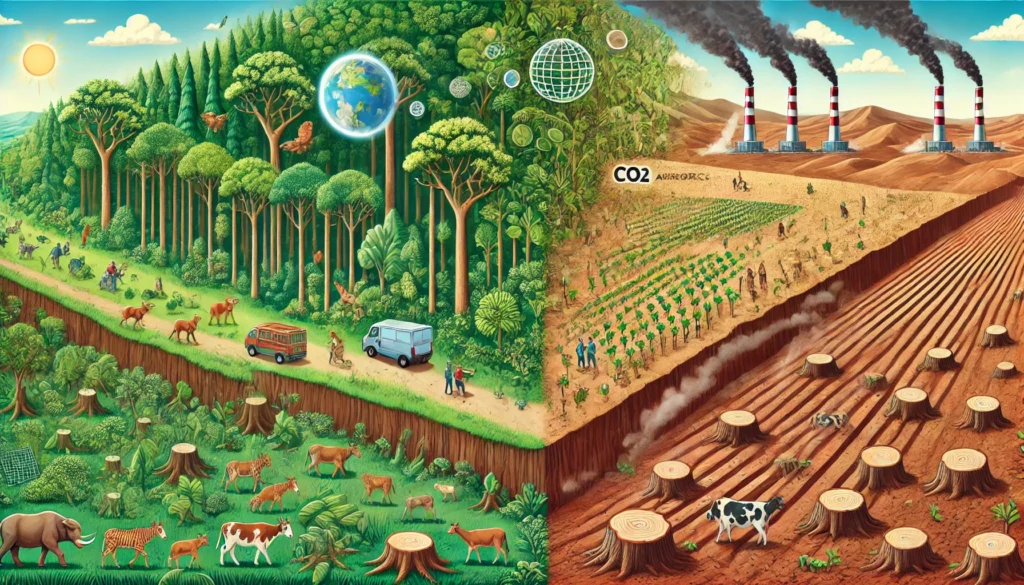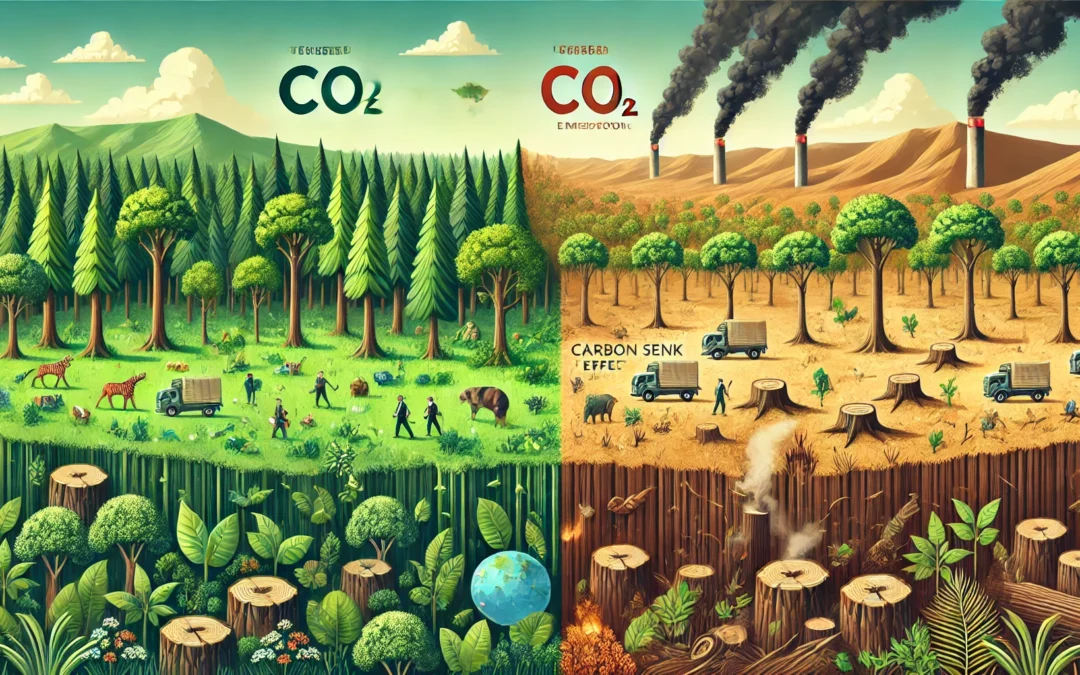Impact of Deforestation on Climate Change
Large-scale forest clearance, or deforestation, significantly affects both biodiversity and climate change. Forests regulate the climate, sustain various plant and animal species, and maintain ecological balance. However, these vital ecosystems are vanishing due to urbanization, logging, and agricultural expansion. Mitigating environmental damage and achieving sustainability requires addressing deforestation’s role in climate change and implementing effective reforestation strategies.
Forests act as carbon sinks by absorbing carbon dioxide (CO2) from the atmosphere and storing it in biomass and soil. This process helps regulate the global climate by reducing greenhouse gas concentrations. When forests are burned or destroyed, the stored carbon is released as CO2, contributing significantly to global warming. Deforestation accounts for 10–15% of global greenhouse gas emissions. The loss of trees reduces the planet’s capacity to absorb future emissions, exacerbating the greenhouse effect.
Effects Beyond Carbon Emissions
Deforestation impacts extend beyond carbon emissions. Forests influence regional and global weather patterns by regulating temperature, humidity, and precipitation. Removing trees disrupts these mechanisms, altering rainfall patterns and increasing the likelihood of extreme weather events. For instance, the Amazon rainforest, often called the “lungs of the Earth,” plays a crucial role in the global water cycle. Deforestation in the Amazon has been linked to prolonged droughts and reduced rainfall, affecting water supply and agricultural productivity regionally and globally.

Loss of Biodiversity
Another severe consequence of deforestation is biodiversity loss. Forests house over 80% of terrestrial species, providing habitat and resources for a vast array of plants and animals. Habitat destruction and fragmentation caused by deforestation threaten many species with extinction. This biodiversity loss jeopardizes essential ecosystem services, such as pollination, water purification, and soil fertility, which are critical for both human well-being and environmental health.
Strategies to Combat Deforestation
Afforestation and reforestation strategies are crucial to mitigating deforestation’s adverse effects. Reforestation involves replanting trees in deforested areas, while afforestation means planting trees in areas not previously forested. These strategies enhance carbon sequestration, biodiversity, and ecosystem restoration.
Successful reforestation initiatives often involve public policy, community engagement, and corporate sector involvement. For example, China’s “Great Green Wall” project aims to plant billions of trees across northern regions to combat desertification and improve environmental conditions. Similarly, Nobel laureate Wangari Maathai’s Green Belt Movement in Kenya has mobilized local communities to plant millions of trees, restoring degraded landscapes and empowering women through environmental stewardship.
Sustainable Land-Use Practices
In addition to large-scale reforestation projects, promoting sustainable land-use practices is vital. Agroforestry, which integrates trees and shrubs into agricultural systems, can enhance soil fertility, water retention, crop yields, and wildlife habitat. Sustainable forestry practices, such as reduced-impact and selective logging, help protect the environment and maintain forest ecosystem health.
For more information on reforestation strategies, you can visit EAT Community to learn more.



